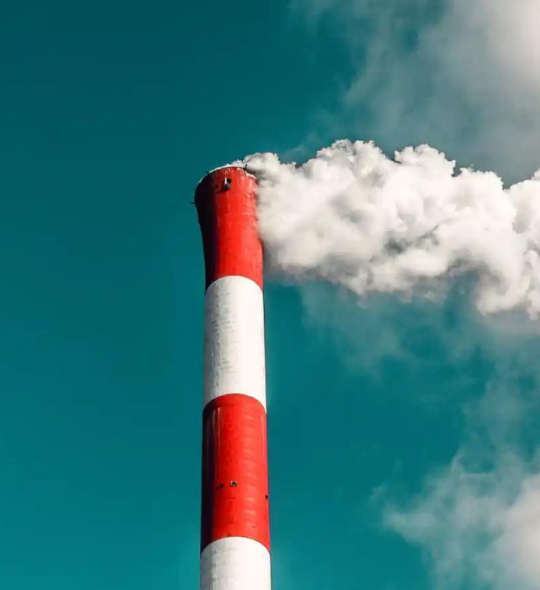
Businesses should view rising carbon taxes as a perfect sales opportunity.
TL;DR
-
Canada’s carbon tax is going up by 25 percent, and is set to rise by $15 (instead of $10) per tonne of CO2 starting in 2023.
-
Businesses face mounting costs from fossil fuel use, making clean technology more attractive than ever.
-
Adopting clean technology solutions helps companies minimize their exposure to carbon pricing, while attracting and retaining customers.
Canada’s carbon tax increase went into force on April 1, but it’s no joke. As the price of carbon continues to rise, businesses need to cut emissions to avoid growing costs.
The cost of waiting to implement clean technology is increasing. Doing so will help the planet, and keep your business competitive.
Are you and your customers prepared for rising carbon taxes?
Businesses need to take rising carbon taxes into account
Canada’s carbon tax has been increasing each year by $10 per tonne of carbon dioxide (CO2). Businesses need to act now to reduce emissions as prices will increase even more next year. Specifically, 2023 will be the first year prices increase by $15 per tonne. This rate will continue until prices reach $170 per tonne by 2030.
In more concrete terms, the price of gasoline and diesel has increased by 2.2 and 2.7 cents per liter, respectively. A 25 percent jump in carbon prices puts even more pressure on companies to reduce emissions or face higher costs.
And despite record inflation, high oil prices, and calls from some provinces for a reprieve, Ottawa is forging ahead. While higher carbon taxes present a challenge for businesses, pricing consistency is important for the clean technology sector.
Minister of Environment and Climate Change Steven Guilbeault notes that private sector investors are expressing hesitancy about the future of the carbon tax. Many are holding back on funding emissions-cutting projects because they see the carbon tax as politically fragile.
With the government determined to stick to its carbon tax timeline, businesses can expect to see rising costs for years to come.
Investments based on current pricing timelines would be at risk if the next government repeals or alters the rules. For example, carbon capture currently costs less than $110 per tonne of CO2. With carbon prices set to hit $170 by 2030, industrial emitters have an incentive to pay for carbon capture instead.
“They can show their investors and their board that this will have an economic return,” says Michael Bernstein, Executive Director of the climate policy organization, Clean Prosperity.
Scrapping carbon pricing would “introduce all kinds of risk and really create an environment that’s not friendly to business and investment,” explains Sara Hastings-Simon, assistant professor at the University of Calgary.
To shore up business confidence, the Canadian government is considering enshrining the carbon tax (and its pricing timeline) into law. This would protect it from decreases or cancellation.
With the government determined to stick to its carbon tax timeline, businesses can expect to see rising costs for years to come.
Are your energy solutions costing you too much?
Higher carbon prices put pressure on companies to reduce their energy usage and accelerate their shift away from fossil fuels.
This shift is aided by high fuel prices due to global tensions, but carbon taxes on their own already represent a substantial outlay for businesses.
For example, let’s consider a one megawatt (MW) diesel generator. As of April 1, the carbon tax on a liter of diesel is 13.4 cents. On average, a one MW diesel generator operating at full load uses 269 liters per hour.
This means that, at full load, this generator is costing its owner $866 every 24 hours just in carbon tax payments. That’s an increase of $173 per day compared to last year.
And that same generator is going to cost you $1,122 per day in 2023. The cost of waiting is stiff, and only increasing.
Inflation is already at record highs, and carbon tax increases will only add to this trend. Companies that rely on fossil fuel generation are forced to either swallow these costs or pass them on to customers.
Whether because of higher prices (from carbon taxes) or because customers want to reduce their supply chain emissions, the more you pollute, the fewer contracts you’re going to sign.
Put simply — businesses that emit more will lose out to more eco-friendly competitors.
Many businesses also struggle to secure the clean technology solutions they need. A crowded solutions marketplace makes differentiating offers complicated, and funding hurdles stall many projects for years.
Moreover, worries about whether a solution will deliver promised savings can prevent companies from acting. Other hurdles include restrictive return-on-investment (ROI) timelines, and limited capital. Projects that go beyond 18–24 months are often not even considered.
That said, solution providers faced with customer hesitancy should view the annual carbon tax increase as a great sales opportunity. Proactive solution providers can use carbon taxes as an ice breaker when engaging customers.
EnPowered provides a way to facilitate this conversation by partnering with solution providers to unlock stalled projects.
Help your customers minimize carbon costs with EnPowered
Rising carbon taxes are driving more energy users to clean technology. To capitalize on this urgency, solution providers can leverage EnPowered Payments to drive sales and save their customers money.
EnPowered Payments is an on-bill payments platform that lets customers buy clean technology solutions — with no upfront costs. Solutions are paid off with a portion of a customer’s energy savings, through their electricity bill. Once the solution has been paid off, customers enjoy 100 percent of the savings on their energy bills.
Providing customers with a way to avoid funding constraints reduces borrowing risks for both yourself and your client, overcomes hesitancy, and helps you close more deals.
With flexible, personalized repayment timelines, the only question customers have to ask themselves is how much do I want to start saving right away?
Ready to learn more? Contact us today to discover how EnPowered Payments helps you sell more and empower your customers to slash carbon costs.





